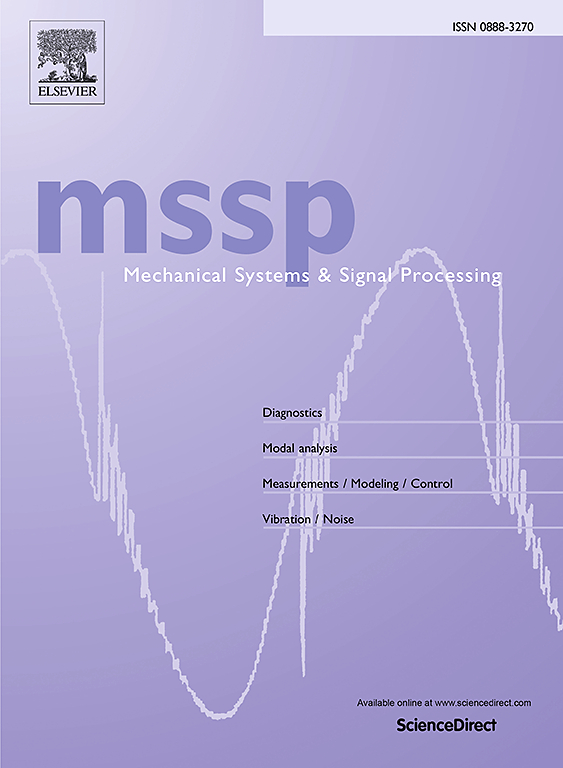A low-frequency unidirectional-strain-mode bistable piezoelectric vibration energy harvester via prestressing curved vibrators
IF 7.9
1区 工程技术
Q1 ENGINEERING, MECHANICAL
引用次数: 0
Abstract
Vibration energy harvesting using piezoelectric transduction becomes increasingly popular as a promising alternative to electrochemical batteries for powering low-power wireless and portable electronic devices. A low-frequency unidirectional-strain-mode bistable piezoelectric vibration energy harvester (USB-PVEH) is proposed to offer a viable solution to the possible damage caused by the bidirectional deformation of piezoelectric plates in this paper. The salient characteristics of the USB-PVEH were that bistable vibration energy harvesting was implemented via the unidirectional-strain piezoelectric vibrators which were constructed by prepressuring two initially-curved piezoelectric plates. Also, the deformation of pre-bent piezoelectric vibrators subjected to the unidirectional compressive strain wasn’t directly induced by the external vibration source but triggered indirectly by the elastic beam. To prove the structural feasibility and ascertain the influence of adjustable magnet installation parameters on the energy harvester, the theoretical investigation, simulation, fabrication and experimental testing were conducted. The results showed that the potential well structure in nonlinear magnetic force can be altered by adjusting installation parameters such as the horizontal distance, vertical distance and installation angle of the adjustable magnet, thereby modifying the dynamic performance of the energy harvester. Additionally, the USB-PVEH exhibited an optimal parameter combination (d = 14 mm, h = 6 mm, α = 67.5°), where the natural frequency was 16 Hz and the effective bandwidth was 19.6 Hz. Furthermore, the maximum output power of the USB-PVEH could reach 5.27 mW at 16 Hz with the optimal load resistance of 70 kΩ. Consequently, it is expected that the USB-PVEH can provide reference for the structural design of PVEH in high-amplitude environments.
通过预应力曲线振动器实现低频单向应变模式双稳态压电振动能量收集器
本文章由计算机程序翻译,如有差异,请以英文原文为准。
求助全文
约1分钟内获得全文
求助全文
来源期刊

Mechanical Systems and Signal Processing
工程技术-工程:机械
CiteScore
14.80
自引率
13.10%
发文量
1183
审稿时长
5.4 months
期刊介绍:
Journal Name: Mechanical Systems and Signal Processing (MSSP)
Interdisciplinary Focus:
Mechanical, Aerospace, and Civil Engineering
Purpose:Reporting scientific advancements of the highest quality
Arising from new techniques in sensing, instrumentation, signal processing, modelling, and control of dynamic systems
 求助内容:
求助内容: 应助结果提醒方式:
应助结果提醒方式:


